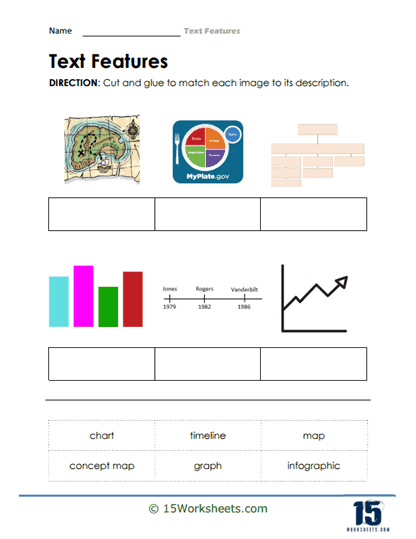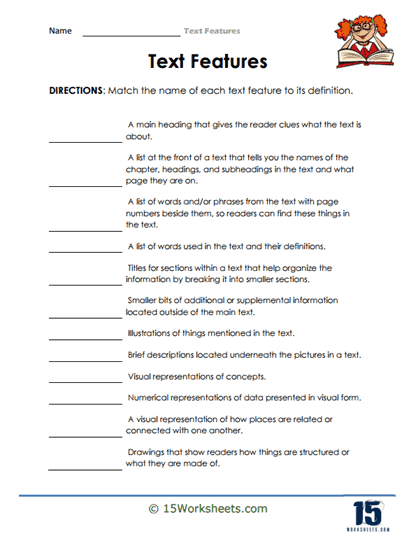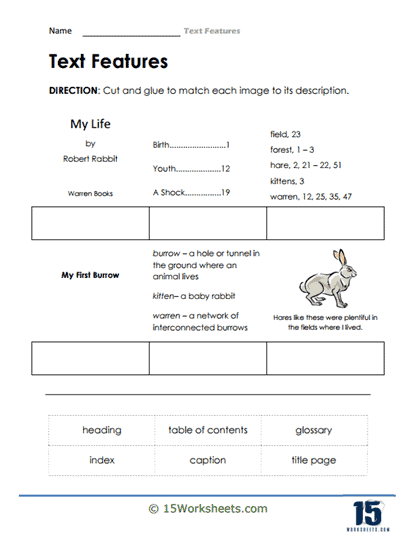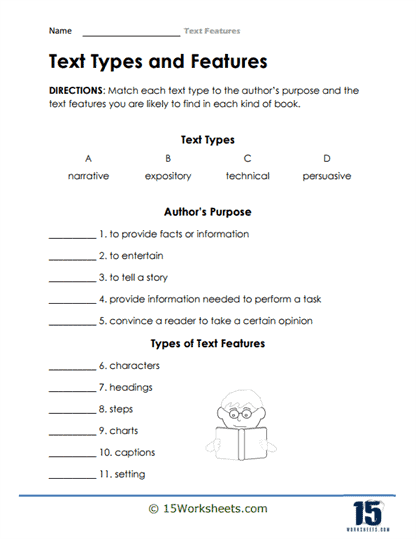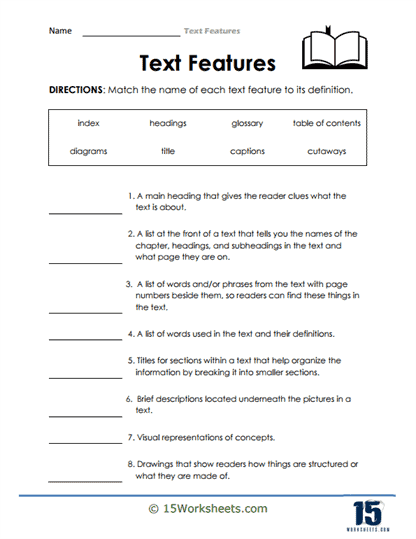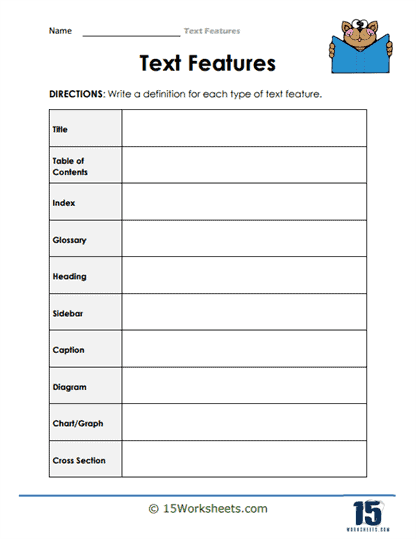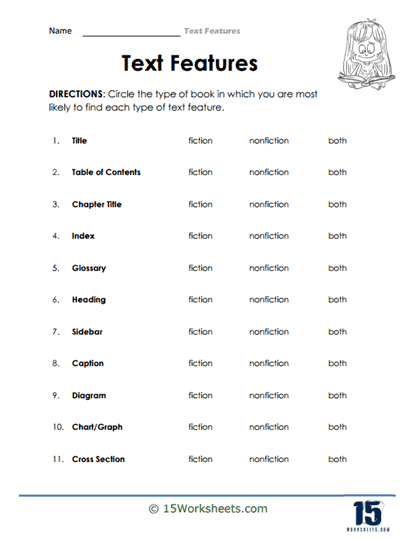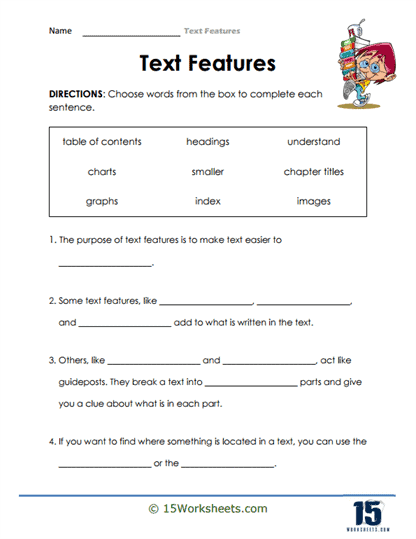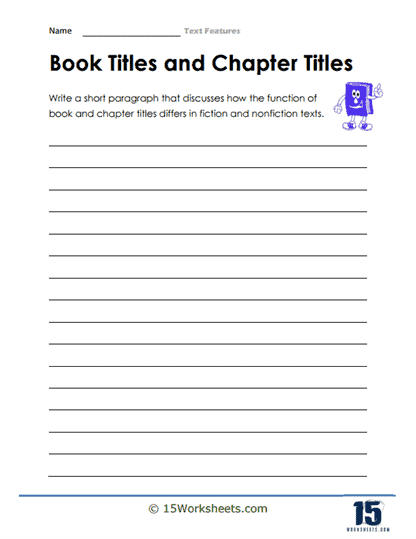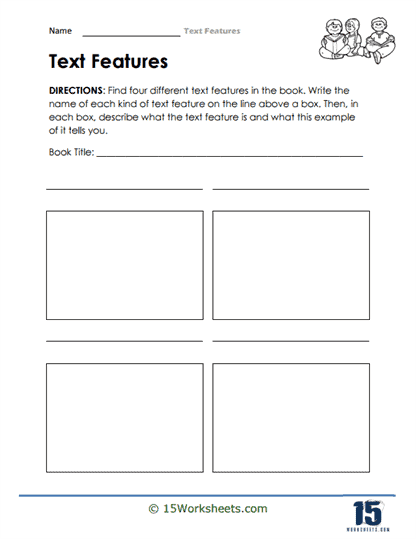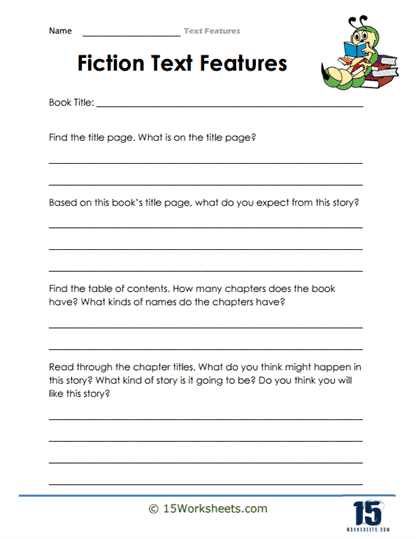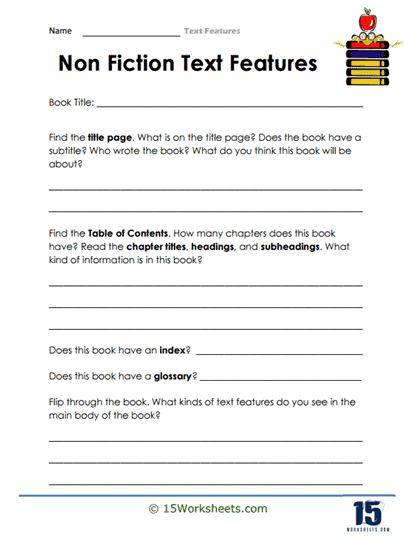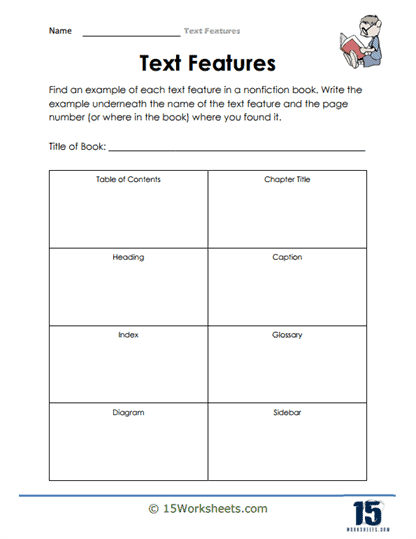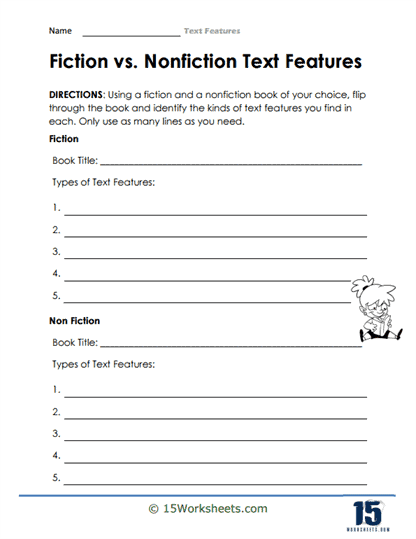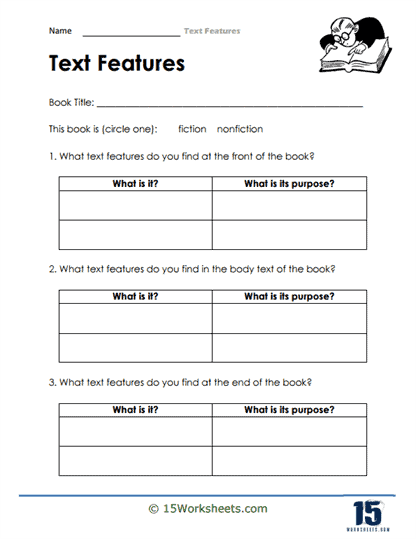Text Features Worksheets
What are Text Features? How to Teach Them to Kids
In general, text features refer to aspects of a nonfiction piece. However, there are textual elements in fictional works, too. It is crucial to cover both. Textual aspects refer to the various components of a piece of writing outside the narrative itself, whether fiction or nonfiction. They’re essential to the story’s comprehension.
Captions, an index, and a glossary are characteristics commonly found in nonfiction texts. Images, chapter headings, and book titles are great examples of fiction.
The following are easy ways to teach text features:
1. Drive Students to Discern Text Elements
Book features such as charts, labels, graphs, pictures, maps, and diagrams are included to help the reader comprehend the material presented in the text. Though it shouldn’t come as a surprise, many students ignore the various textual aids presented on the page in favor of the main text itself.
The primary objective in teaching about text features in nonfiction texts is to have students become aware of their presence in reading nonfiction texts. Take notice of them when they are present in books.
Introduce them to the concept of text features by providing a brief definition and some examples. Read the first few chapters of a few nonfiction books with multiple examples. To keep things simple, don’t delve too deeply into the lessons imparted by the text feature just yet. Get them familiarized with the features and their names. Also, teach them the importance of not overlooking text elements because they might provide crucial information that isn’t always present in the main text.
Break the class into smaller groups for a text feature scavenger hunt. In this activity, students examine many examples of each text feature in a collection of nonfiction books. Choose novels in advance to provide enough representation of all possible textual features.
Students identify specific text features. The aim is to locate a single instance of each text feature they’ve identified. To facilitate the group discussion of the text features, place sticky notes on the pages where they have found them.
Students will develop the habit of pausing to take note of textual details as they appear by engaging in this exercise. Give them some time if they can’t decipher the text feature.
2. Instruct Students on How to Interpret Text Features for Learning
After students develop the habit of actively looking for text features, they must be instructed on the specifics of what each characteristic reveals.
Text features are defined, and various examples are shown to students. Even before they begin, they see a short animated video. Show your students various charts, photos, and extra-textual features, such as glossaries, indexes, and tables of contents that authors can use in their writing.
3. Have Students Use Text Features Independently
Students have reached the point where they recognize the need of pausing to take in text features and have gained an understanding of the various ways these features can inform and enrich their reading. It’s time to start taking notes on what they did right.
Naturally, showing by doing is the greatest way to get started. Use multiple read-alouds to demonstrate how to apply the text features supplied to learn something new.
Consider using different nonfiction works, as this will allow students to compare and contrast the many ways in which material is presented.

